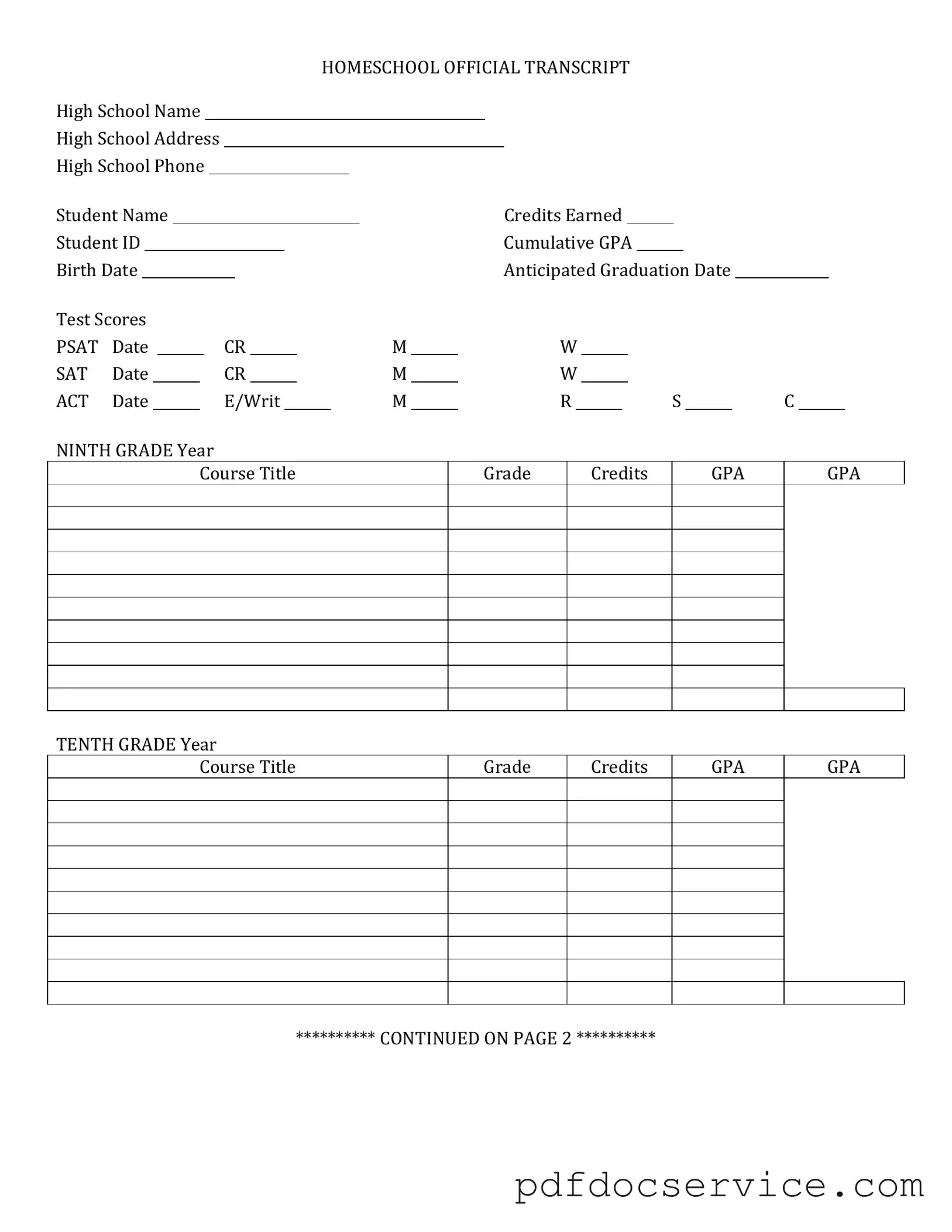Fill Your High School Transcript Form
The High School Transcript form is an official document that records a student's academic achievements during their high school years. It typically includes grades, courses taken, and credits earned, serving as a key component for college admissions and job applications. Understanding its importance can help students and parents navigate educational and career opportunities effectively.
Open High School Transcript Editor
